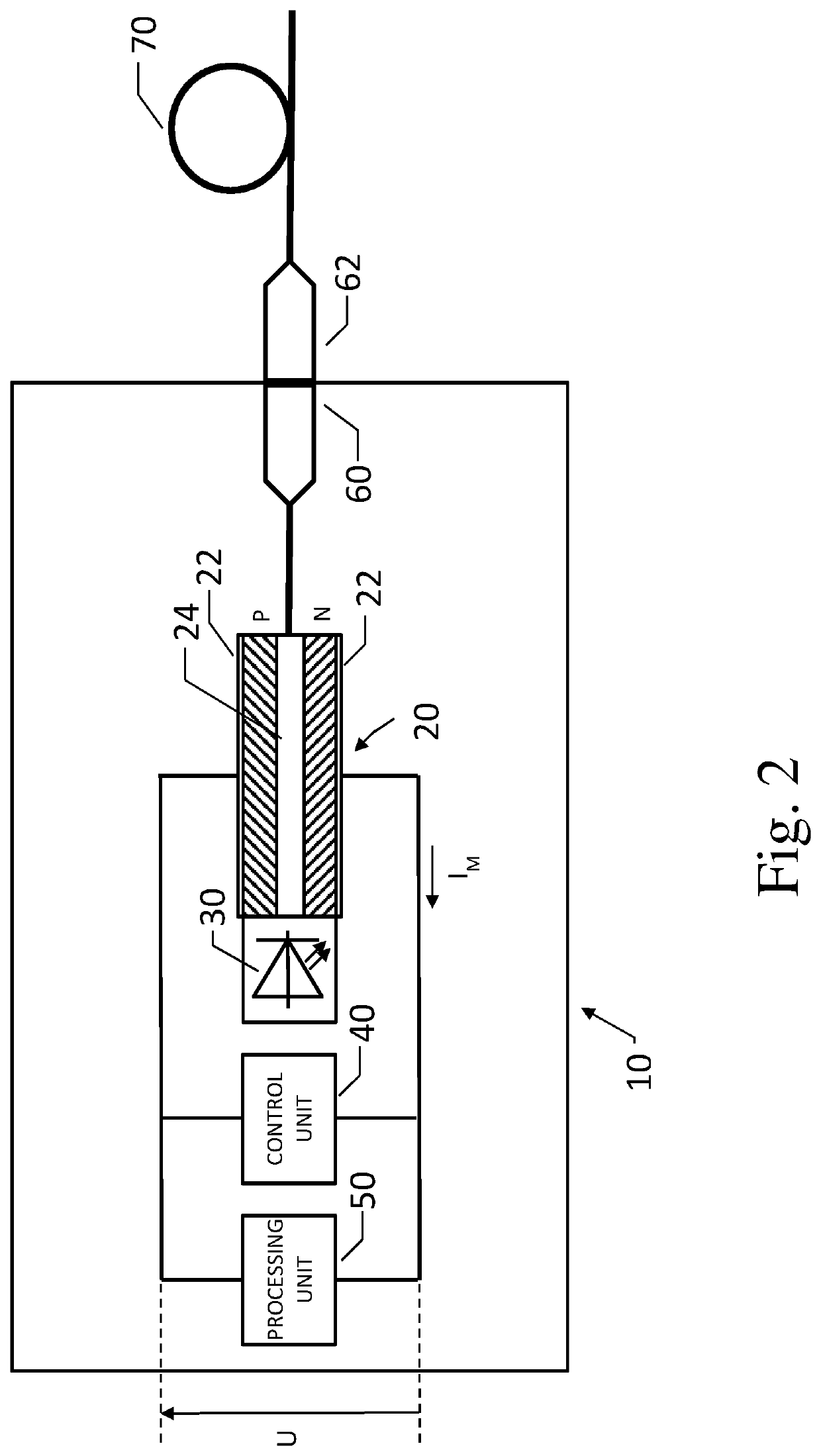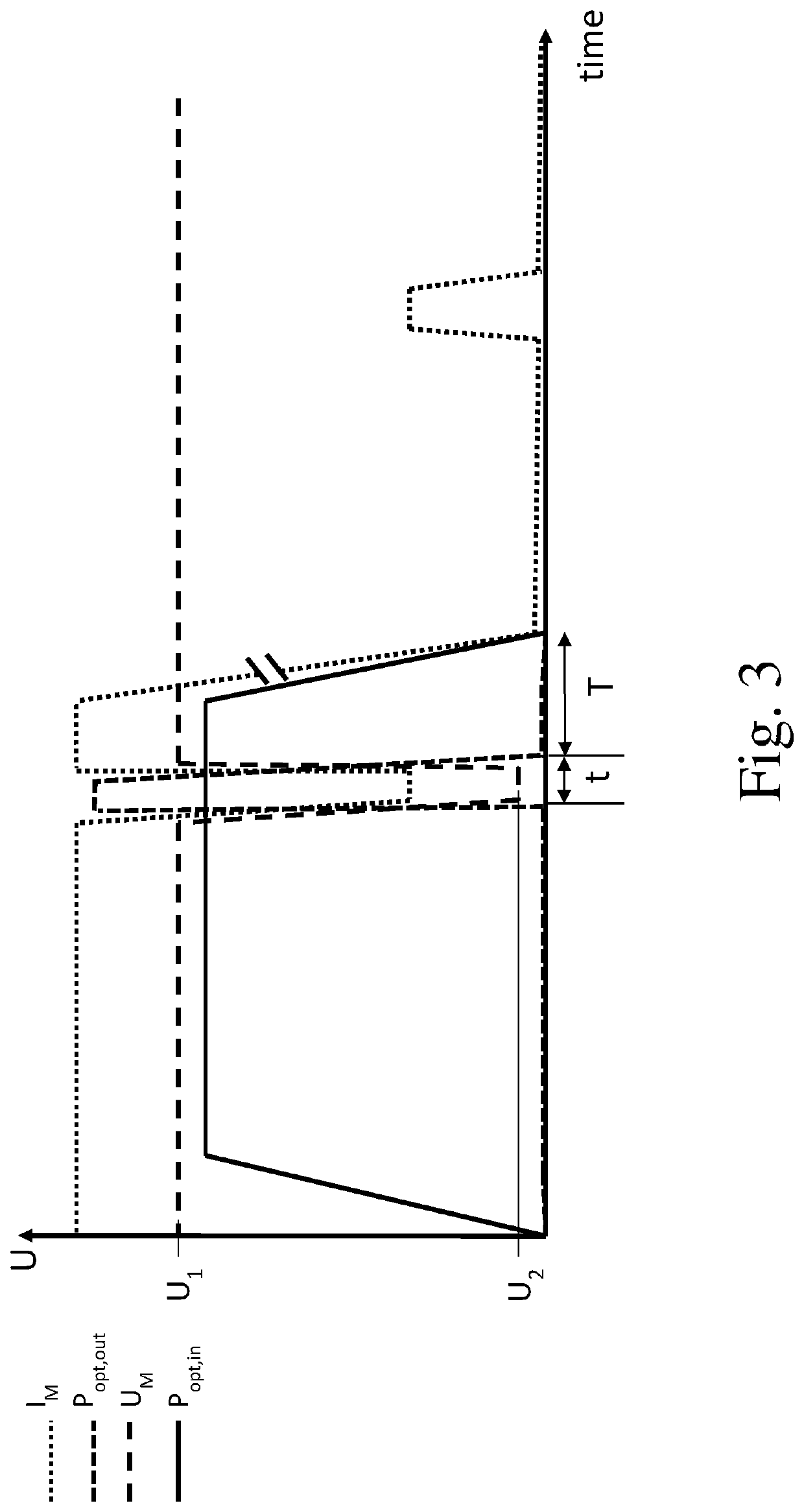OTDR using an electro-absorption modulator for both pulse forming and pulse detection
a technology of electro-absorption modulator and pulse detection, applied in the field of fiberoptic communication, can solve the problems of large amount of light to be reflected back, inability to achieve perfect absorption-free transmission of optical transmission fiber, and detectors temporarily blinded or saturated, so as to reduce maintenance and logistics costs for operators, the effect of effective determining the length of the dead zon
- Summary
- Abstract
- Description
- Claims
- Application Information
AI Technical Summary
Benefits of technology
Problems solved by technology
Method used
Image
Examples
Embodiment Construction
[0040]For the purposes of promoting an understanding of the principles of the invention, reference will now be made to a preferred embodiment illustrated in the drawings, and specific language will be used to describe the same. It will nevertheless be understood that no limitation of the scope of the invention is thereby intended, such alterations and further modifications in the illustrated apparatus and such further applications of the principles of the invention as illustrated therein being contemplated as would normally occur now or in the future to one skilled in the art to which the invention relates.
[0041]FIG. 1 shows a schematic representation of a conventional OTDR 1 comprising a light-emitting device 2 and a light detection device 4. The light-emitting device 2 is configured for emitting sampling light pulses into the optical transmission fiber 6 via a connector 7. The sampling light pulses pass through the circulator 5 and are reflected at an irregularity in the optical t...
PUM
| Property | Measurement | Unit |
|---|---|---|
| time | aaaaa | aaaaa |
| time | aaaaa | aaaaa |
| time | aaaaa | aaaaa |
Abstract
Description
Claims
Application Information
 Login to View More
Login to View More - R&D
- Intellectual Property
- Life Sciences
- Materials
- Tech Scout
- Unparalleled Data Quality
- Higher Quality Content
- 60% Fewer Hallucinations
Browse by: Latest US Patents, China's latest patents, Technical Efficacy Thesaurus, Application Domain, Technology Topic, Popular Technical Reports.
© 2025 PatSnap. All rights reserved.Legal|Privacy policy|Modern Slavery Act Transparency Statement|Sitemap|About US| Contact US: help@patsnap.com



